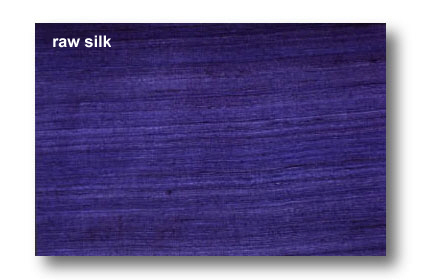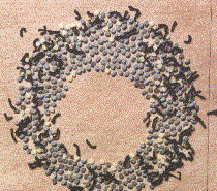 When
you look at or wear various silk products which are so elegant,
poised and possessing natural grace, you must wonder how silk - the
"queen of fibers" - comes into being.
When
you look at or wear various silk products which are so elegant,
poised and possessing natural grace, you must wonder how silk - the
"queen of fibers" - comes into being.Silkworms
 When
you look at or wear various silk products which are so elegant,
poised and possessing natural grace, you must wonder how silk - the
"queen of fibers" - comes into being.
When
you look at or wear various silk products which are so elegant,
poised and possessing natural grace, you must wonder how silk - the
"queen of fibers" - comes into being.
Silkworms reproduce from eggs. It takes 40,000 eggs to create one ounce of silk!
The fertilized eggs will hatch into a larva. The body of the newborn larva is black or very dark brown with stiff little hairs. It looks like a little ant and in Chinese it is also called an "ant silkworm".
As they grow up, silkworms eat continuously. They grow new skins and shed the old ones. This is called molting. The period between two sloughs is called an instar. Silkworms shed their skin five times while growing up.
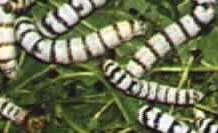
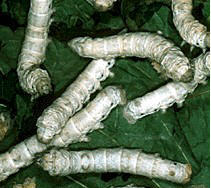
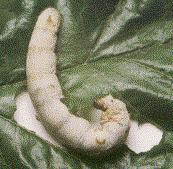
Silkworms only eat fresh mulberry leaves (or artificial food). The silkworm eats continuously for twenty-six days. Then it stops eating and spins its cocoon. The thread from a single cocoon is about one mile long!
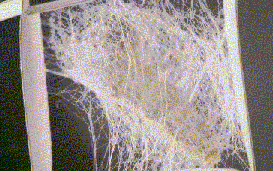
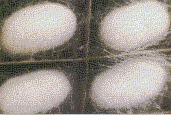
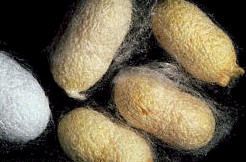


The adult of the silkworm is called the silkworm moth. The pupa shell splits open and the silkworm moth emerges from it. It secretes a special saliva which dissolves a hole in the cocoon, so the moth can push its way through the silk and emerge into the outside world. The moths cannot fly since their bodies are large and their wings are small. The silkworm moth mates with another moth within minutes of emerging from the cocoon. During mating, which lasts one day, the moths consume a lot of body energy. The female lays eggs immediately afterward. The moths do not eat, and die naturally after one week.
To make silk, the cocoons are heated to kill the pupas and dry the cocoons. The factory unreels the silk from the cocoons, thereby producing a single, long, white thread. Zhejiang province of China is the main source of Chinese silk. There are more than three hundred silk mills in the province. It is China's largest producer of silk and silk piece goods.
Silk is made into different textures of fabric:
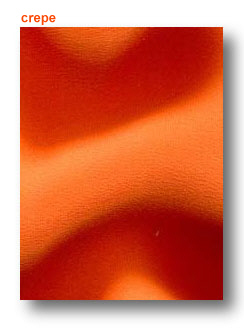
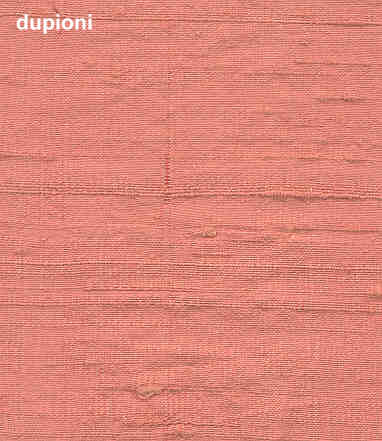 Silk
Crepe is a luxurious fabric with a good sheen and a pebbly texture.
It has a beautiful drape.
Silk
Crepe is a luxurious fabric with a good sheen and a pebbly texture.
It has a beautiful drape.
Dupioni is a lustrous silk often woven from two different colors of threads, so that it shimmers or changes color in the light.
The production of raw silk consisted of a reeler using
their hands to make the silk, later using a reel machine where a
reeler used her right hand to move the spool and her left hand to
connect and throw threads. This gives raw silk its unique coarse texture.